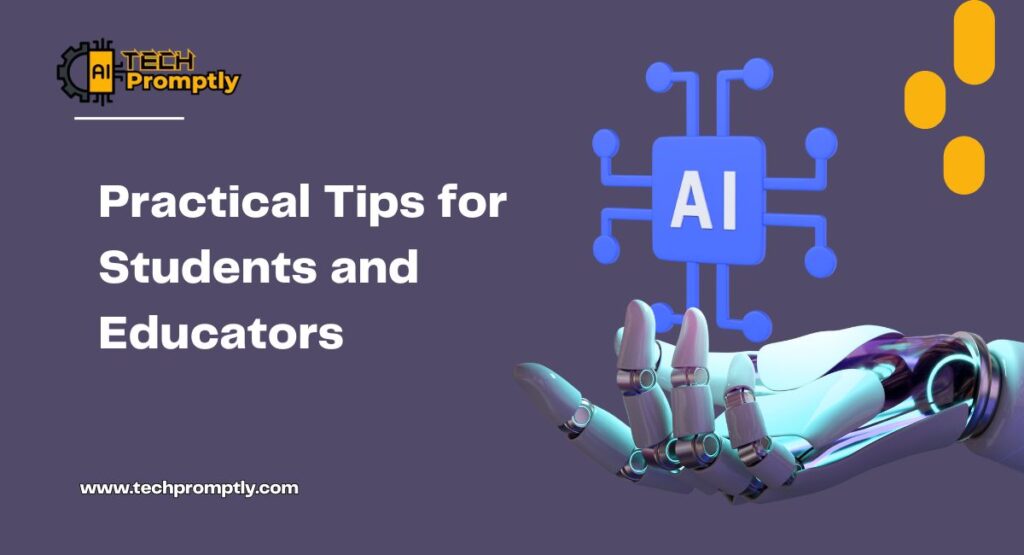Artificial Intelligence (AI) is emerging as an integral part of the education system and is changing how institutions present educational content, evaluate students and maintain academic integrity. One of the most frequently asked questions in this field can be: Does Blackboard have AI detection? As a widely utilized Learning Management System (LMS), Blackboard plays an essential role in the facilitation of online education, however it’s capabilities for AI detection are both fascinating and confusing to teachers and students.
In this post, we’ll dive into the possibility that Blackboard makes use of AI for cheating and plagiarism detection, the ways it incorporates the use of AI in its tools and how it can mean for integrity in academics. At the end of this article you’ll have an extensive knowledge of Blackboard’s AI functions, other tools it offers as well as how teachers and students can make use of these features in a responsible way. You may read our blog on ZeroGPT Vs GPTZero: The Battle of AI Detection Tools
Table of Contents
Understanding Blackboard and Its Core Features
Before we dive into Blackboard’s AI capabilities we must first know the basics of what Blackboard is. Blackboard Learn is a robust LMS created to facilitate online instruction as well as student management and the ability to track performance. Colleges, universities and even corporate training programs utilize Blackboard to simplify their learning and teaching methods.
The most important characteristics include:
- Content Management Uploading and organizing material for the course.
- Assessment Tools Assessment tools for students: Quizzes as well as exams and assignments.
- Collaboration Tools Forums for discussion, workspaces with groups and much more.
- Integration with third-party Tools plugins and integrations with other services such as Turnitin as well as SafeAssign.

Does Blackboard Have AI Detection for Cheating?
SafeAssign: Blackboard’s Built-In AI Tool
One of Blackboard’s most renowned AI features includes SafeAssign an application designed to spot plagiarism issues in student writing. SafeAssign employs algorithms to analyze the submitted document against the academic papers database online resources, as well as student submissions. Although it is not a standalone “AI detection” tool in the strictest sense, it does use natural processing of language (NLP) techniques to find the overlaps and commonalities.
Highlights from SafeAssign
- Plagiarism Recognition matches text against a massive database.
- Originality The report Provides a thorough description of the matched content to study.
- AI Aid While SafeAssign isn’t officially marketed for its role as an AI tool, it does use clever algorithms to simplify the process of detecting plagiarism.
Integration with other AI-powered Tools
Blackboard can be integrated with other AI-powered tools to enhance its capabilities. For instance:
- Turnitin is a leading tool for detecting plagiarism commonly viewed as an alternative or a supplement to SafeAssign. Turnitin utilizes sophisticated AI algorithms to recognize not only copied content, but also writing styles that show AI-generated content.
- Proctoring Software Platforms such as Proctorio and Respondus which are often integrated in conjunction with Blackboard employ AI to track students’ behavior during examinations, and flag cheating potential, for example odd movements or eye tracking anomalies.

AI in Blackboard: Enhancing Academic Integrity
AI within Blackboard isn’t only for plagiarism detection. It also plays a larger role in supporting educators as well as administrators:
1. Proactive Academic Integrity
AI tools such as SafeAssign allow students to write original pieces of work. Through the presentation of originality reports, students are informed of the dangers of plagiarism and provided with the opportunity to improve their work before final grade.
2. Streamlined Grading and Feedback
AI-powered grade systems, typically combined with Blackboard assist teachers to analyze assignments with efficiency. These tools offer insight into common errors, and offer automated feedback that improves teaching and learning.
3. Detection of AI-Generated Content
With the emergence of AI tools such as ChatGPT teachers are worried about students writing AI-generated papers. Although Blackboard isn’t able to detect AI-generated content. However, integrations such as Turnitin are evolving to detect patterns in these tools.

Benefits and Limitations of AI Detection on Blackboard
Benefits
- Efficiency Automation of plagiarism checks helps educators save time.
- Precision: AI tools reduce human errors in assessing the originality of.
- Transparency Originality reports encourage ethical behavior.
Limitations
- False positives: AI detection tools could flag content that is legitimate incorrectly.
- Dependence upon Other Tools: Blackboard relies heavily on integrations with third parties for sophisticated AI capabilities.
- Evolutionary AI The challenges As students have access to advanced AI software for writing, the detection methods need to constantly evolve.

Practical Tips for Students and Educators
For Students
- Utilize Original Sources Be sure to cite sources properly to prevent accidental plagiarism.
- Reviews Review originality reports (if there are any available) to make sure your work conforms to academic standards.
- Beware of AI Tools for writing Though tempting, using AI-generated content could affect your learning and could be tagged.
For Educators
- Education on Academic Integrity Create tools and training on ethical research methods.
- Make use of AI Tools Carefully Use tools like Turnitin and Proctorio to improve academic supervision.
- Stay Up-to-date As AI develops, keeping abreast about the most recent techniques and detection techniques is essential.

The Future of AI Detection in Education
The interplay between AI as well as education technology is rapidly developing field. Although blackboard’s AI technology for detection is focused on tools such as SafeAssign but the enlargement of more sophisticated AI solutions is expected. In the near future we might witness:
- Advanced AI in Writing Style Analysis: Identifying not only copied text, but also writing patterns.
- Live Feedback: AI tools that give live feedback on the course of exams or assignments.
- Adaptive Learning Systems Personalization driven by AI for the education of academic integrity.
FAQs
Can Blackboard recognize AI-generated material?
Presently, Blackboard doesn’t natively detect AI-generated content. However, integrated applications like Turnitin have introduced features that can identify essays created by AI tools, such as ChatGPT.
Is SafeAssign reliable for plagiarism detection?
Sure, SafeAssign has proven to be reliable in detecting text overlaps and possible plagiarism. However, teachers should use it along with manual review for the most effective results.
Can Blackboard monitor cheating during exams?
Blackboard isn’t a test-monitoring tool in and of itself however it does integrate with software for proctoring, such as Proctorio which makes use of AI to identify suspicious behaviour.
What benefits can educators derive by AI within Blackboard?
Teachers can save time by automating plagiarism checks, gain insight into the work of students and help promote academic integrity with the use of transparency tools, such as Originality reports.
Conclusion
What, then, is the fact that Blackboard has AI detection? Yes, with a few some caveats. Tools such as SafeAssign are essential in detecting plagiarism, and integrations with sophisticated AI platforms enhance the abilities of the program. If you’re a student trying to attain academic excellence or an educator who is responsible for the fairness of your teaching, knowing these tools is crucial in the modern world of digital learning.
Be informed, use the tools in a responsible manner and create an environment of integrity in education. If you’re keen to explore these options further, why not check out SafeAssign or explore additional integrations that maximize the benefits of the AI features of Blackboard?

